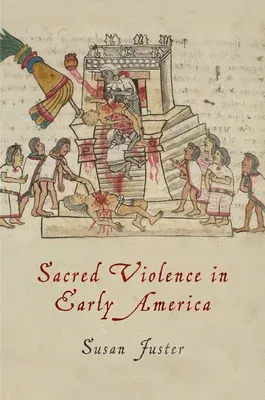Sacred Violence in Early America offers a sweeping reinterpretation of
the violence endemic to seventeenth-century English colonization by
reexamining some of the key moments of cultural and religious encounter
in North America. Susan Juster explores different forms of sacred
violence--blood sacrifice, holy war, malediction, and iconoclasm--to
uncover how European traditions of ritual violence developed during the
wars of the Reformation were introduced and ultimately transformed in
the New World.
Juster's central argument concerns the rethinking of the relationship
between the material and the spiritual worlds that began with the
Reformation and reached perhaps its fullest expression on the margins of
empire. The Reformation transformed the Christian landscape from an
environment rich in sounds, smells, images, and tactile encounters, both
divine and human, to an austere space of scriptural contemplation and
prayer. When English colonists encountered the gods and rituals of the
New World, they were forced to confront the unresolved tensions between
the material and spiritual within their own religious practice. Accounts
of native cannibalism, for instance, prompted uneasy comparisons with
the ongoing debate among Reformers about whether Christ was bodily
present in the communion wafer.
Sacred Violence in Early America reveals the Old World antecedents of
the burning of native bodies and texts during the seventeenth-century
wars of extermination, the prosecution of heretics and blasphemers in
colonial courts, and the destruction of chapels and mission towns up and
down the North American seaboard. At the heart of the book is an
analysis of "theologies of violence" that gave conceptual and emotional
shape to English colonists' efforts to construct a New World sanctuary
in the face of enemies both familiar and strange: blood sacrifice,
sacramentalism, legal and philosophical notions of just and holy war,
malediction, the contest between "living" and "dead" images in Christian
idology, and iconoclasm.

